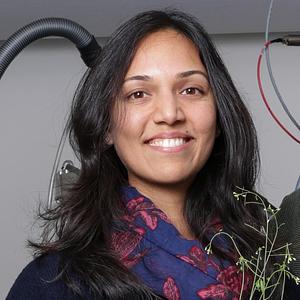
Priya Ramakrishna
Expertise
- Environmental stress
- Plant root biology
- Mineral nutrition
- Cryo-imaging
- Ion transport
- Salinity
Selected publications
Elemental cryo-imaging reveals SOS1-dependent vacuolar sodium accumulation
Priya Ramakrishna, Francisco M. Gámez-Arjona, Etienne Bellani, Cristina Martin-Olmos, Stéphane Escrig, Damien De Bellis, Anna De Luca, José M. Pardo, Francisco J. Quintero, Christel Genoud, Clara Sánchez-Rodriguez, Niko Geldner & Anders Meibom
Published in Nature in